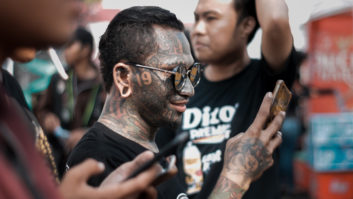The author is membership program director of the National Federation of Community Broadcasters. NFCB commentaries are featured regularly at www.radioworld.com.
This has been a difficult seven days for many of us, with a spate of horrifying crimes grabbing headlines nationwide. The perniciousness of these acts is only worsened by their targeting of things so many Americans hold dear: inclusion and democracy. Yet, amid all the confusion and questions, community radio can step in during this moment to foster unity.
The news has been grim. More than a dozen pipe bombs mailed to prominent politicians and media were caught in transit or on site. None of the devices exploded and no one was injured, fortunately. Law enforcement quickly captured a reported white supremacist, whose life would be examined shortly thereafter in media reports.
[Read: Community Broadcaster: College Radio Shows the Way]
In Pittsburgh, Pa. and Jeffersontown, Ky., shootings by alleged white supremacists have left a nation struggling for answers. Violence at protests, confrontations in restaurants, and growing hostility fuel the ticker every day. At dinner tables across the country, people are talking about politics, the tone of the United States, the state of mental health and much more.
Where can community radio start to explore these matters?
It is quite easy to rush to the go-to trope: that current events and the latest political rhetoric are fostering divisions. While this is a popular talking point — in part because it inevitably taps the news cycle of the moment and stirs emotions — the story is more complicated. In fact, hate crimes in the U.S. actually have been climbing for years. Community radio can investigate the state of the nation and contribute substantively, rather than fall into the commercial TV trap of blaming left or right.
Here are just a few departures you can take to look at our country’s climate and increasing numbers of tragedies.
Mental illness has become politicized in some circles for how it can be referenced. To be clear, however, how mental illness is recognized and handled by law enforcement and, more importantly, lawmakers is a life and death issue. For instance, one’s arrest record and classification for mental health issues can, in states like Florida, show up on your background check and exclude you from gun purchases. Such was the case with the Marjory Stoneman Douglas High School shooter, who exhibited many disturbing behavior patterns, but still cleared a background check to buy a gun he used in the shootings. In other states, whether and how someone is institutionalized, whether the state has the right to do so involuntarily, and on what conditions indirectly impact matters like the ability to own, purchase or be near a firearm. What is your state’s level of involvement regarding mental illness and these issues? How do police in your region handle mental illness or reports of potentially dangerous activities by citizens? These are all valid questions your station can ask.
Another way to approach these issues: last year, the New York Times focused on the growing problem of online radicalization. Seemingly emerging to the public consciousness due to the effective recruitment tactics of the Islamic State militant group, use of YouTube, Facebook and other platforms to recruit extremist sympathizers has gotten more and more attention. In spite of tech companies seeking to marginalize radical elements on the political spectrum, they have failed to drive them off the web. A possible dialog for community media has to do with counteracting online recruitment. What can communities do? What can parents, who are seeing many of these efforts aimed at their children, do to educate young people? Amid coverage of the latest crimes, the use of online communities and social media as an outlet and resource is becoming clearer. What groups in your state are calling for better stewardship of the digital space?
And lastly, Axios recently offered a provocative observation. “America is an increasingly diverse nation but a loud, hyperactive group of well-to-do whites on the left and right are tearing it apart from the edges.” In the study, it notes fully two-thirds of those surveyed are generally liberal to moderate to politically disengaged, but report feeling exasperated. The rest, split between white liberals and conservatives, are hyperengaged, deeply partisan and have the resources to exert themselves moreso than many others. While it’s clear these may not be the criminal elements that are leading the news, Axios’ suggestion that the political polarization we hear so much about is the product of a particular segment may be the start of a local conversation.
With midterms next week, the potential for more strain and, sadly, more conflict is upon us. As America struggles with the latest senseless incidents, community media can play a crucial role in bridging a gap, and for creating a better understanding of our tense world.
[Want more information like this? Subscribe to our newsletter and get it delivered right to your inbox.]












